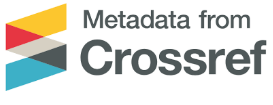Research on tree growth of acacia and Eucalyptus plantation on embankment at Hon Dat district, Kien Giang province
Keywords:
A. hybrid, A. auriculiformis,, E. hybrid, tree growth, embankmentAbstract
Research on the effect of planting density and fertilizer on growth and
productivity of acacia hybrid, Acacia auriculiformis and eucalyptus hybrid
planted on the embankment in Hon Dat district, Kien Giang province,
conducted from 2016 - 2020. The study was evaluate the characteristics
of soil condition befor establish experiments. The experiments design full
randomized block, with 3 replicates, including 4 planting density levels and
5 fertilizer treatments, area of each experimental plot 300 m
2
. The research
results have shown that: (i) The soil in the study area is strongly acid sulphate soil with low pH,
high levels of iron and aluminum toxins, low pirite level, so the excavation
of canals to make embankment for plantations have to limit digging to the
pirite layer, which has the potential to affect the growth of the plantation and
adversely affect the environment; (ii) Planting density did not significantly
affect survival rate, but had a great influence on growth and productivity
of A. hybrid, A. auriculiformis and E. hybrid plantations. The appropriate
density of afforestation on the embankment is 2,000 - 3,333 trees/ha for MAI
get 28.4 - 33.8 m
3
/ha/year for A. auriculiformis; from 38.0 - 47.0 m
3
/ha/year
for A. hybrid and from 37.3 - 44.1 m
3
/ha/year for E. hybridafter 4.5 years
old; (iii) Phosphate and NPK fertilisers have an effect on survival and growth
of young plantation. For A. hybrid and A. auriculiformis,there is no obvious
effect, but there is a very clear effect on growth and productivity of E. hybrid
plantations. Planting acacia on the embankment should apply fertilize 100-200 g phosphate/tree and planting E. hybrid should apply fertilize 100-200 g
phosphorus + 100 g NPK/tree; (iv) Proposing the application of afforestation
techniques of acacia, eucalyptus on acid sulfate soil in Hon Dat district, Kien
Giang province and other places with similar site conditions, must be planted
on high beds and embankments with-out flooding, using new clones that are
technically advanced, planting density and reasonable fertilizing from the
results of this study will bring high benefit to forest growers.
References
1. Nguyễn Ngọc Bình, 1996. Đất rừng Việt Nam. Viện Khoa học Lâm nghiệp Việt Nam. Nhà xuất bản Nông nghiệp, Hà Nội, 156 trang.
2. Kiều Tuấn Đạt, Ngô Văn Ngọc, Nguyễn Trọng Nam, Phan Thị Mỵ Lan, Lê Thanh Quang, 2019. Báo cáo dự án “Sản xuất thử nghiệm các giống TBKT keo lai (AH1, AH7), Keo lá tràm (AA1, AA9), bạch đàn lai (UE24, UE27) có năng suất cao đã được công nhận trên líp và bờ bao tại Tứ giác Long Xuyên nhằm cung cấp nguyên liệu cho
chế biến ván nhân tạo”. Viện Khoa học Lâm nghiệp Việt Nam.
3. Kiều Tuấn Đạt, 2015. Nghiên cứu ảnh hưởng của vật liệu hữu cơ sau để tại sau khai thác đến độ phì đất và năng suất rừng trồng Keo lá tràm ở các chu kỳ sau tại Phú Bình, Bình Dương. Luận án Tiến sỹ Lâm nghiệp. 128 trang.
4. Trần Lê Huy, 2019. Thực trạng ngành chế biến gỗ Việt Nam và nhu cầu nguyên liệu cho chế biến xuất khẩu. Hiệp hội Gỗ và Lâm sản tỉnh Bình Định.
5. Nguyễn Thế Hưởng, 2017. Nghiên cứu chọn giống bạch đàn có khả năng chịu mặn để trồng rừng ven biển. Luận án Tiến sỹ Lâm nghiệp. 108 trang.
6. Vũ Đình Hưởng, Phùng Văn Khang, Ngô Văn Ngọc, Nguyễn Xuân Hải, Trần Thanh Cao, Phạm Văn Bốn, Kiều Tuấn Đạt và Lương Văn Minh, 2017. Thực trạng nghiên cứu và phát triển rừng trồng tràm và keo trên đất phèn vùng Đồng bằng sông Cửu Long. Tạp chí Khoa học Lâm nghiệp, số đặc biệt năm 2017, trang 85-94.
7. Võ Ngươn Thảo, Lương Văn Minh, Trần Văn Long, Ninh Văn Quang, Lê Đình Trường, Vũ Tuấn Thủy, Huỳnh Trọng Khiêm, 2014. Xây dựng mô hình sản xuất thử nghiệm trồng rừng keo lai (Acacia hybrid) bằng các dòng có năng suất cao đã được công nhận trên vườn cây tạp và bờ bao vùng rừng tràm bán đảo Cà Mau. Báo cáo tổng kết dự án. Viện Khoa học Lâm nghiệp Việt Nam.
8. Lê Đình Trường, 2020. Khảo nghiệm các dòng keo lai (Acacia auriculiformis × Mangium)và Keo lá tràm (Acacia auriculiformis)đã được công nhận trồng trên bờ líp sẵn có khu vực U Minh Hạ. Báo cáo tổng kết đề tài. Sở Khoa học và Công nghệ Cà Mau








